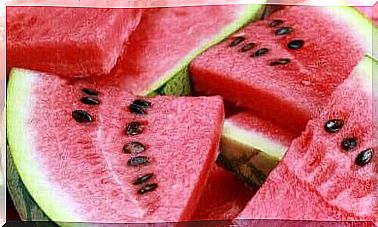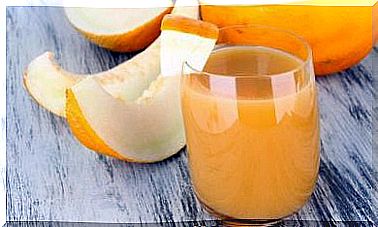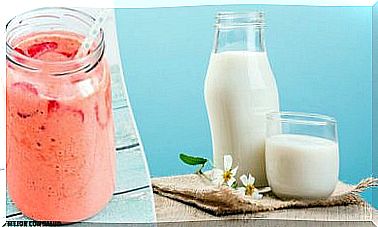The Nutritional Value Of Red Fruits And Vegetables
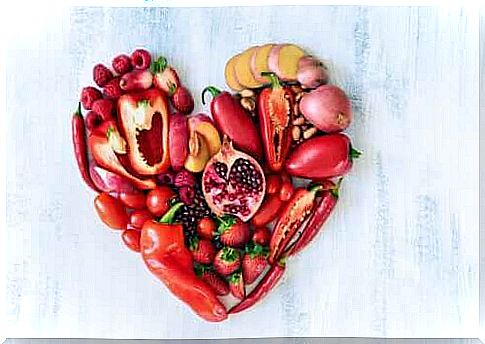
Adding color to a meal isn’t just about presentation. It is also an important factor for health. Introducing red, green, white and yellow fruits and vegetables into the daily diet is therefore a way to provide the body with a wide variety of nutrients.
Experts have long studied this to distinguish the properties of each type of color in a particular food. Today’s article discusses red fruits and vegetables because it is a color that gives us energy and vitality.
The nutritional value of red fruits and vegetables
Natural pigments are responsible for the color of fruits and vegetables. In addition, science is interested in their presence in the diet, as they can have positive effects on the body. Constituents that are predominant in red fruits and vegetables include:
- lycopene
- anthocyanins
- cryptoxanthin
- beta-cyanines
Specifically, there seems to be a link between the consumption of carotene, which is found in red fruits and vegetables, and a lower risk of lung and prostate cancer. However, much progress remains to be made in this regard. However, early studies are promising in this regard.
Carotenoids play a fundamental role in the development of neurological health. This is because they are present in large quantities in the brain. Its consumption may help prevent the development of neurodegenerative diseases due to its nutritional value, anti-inflammatory and antioxidant properties.
It seems that carotenes also help to enhance visual capacity and night vision. In addition, there is a lower risk of developing problems such as macular degeneration, associated with age, in those who regularly consume red fruits and vegetables.
Twelve red fruits and vegetables and their benefits
The food advisory bodies of many countries have already included a variety of colors in the diet in their recommendations. So give your dishes a touch of strength and vitality with one of the 12 red fruit and vegetables listed below.
1. Tomatoes
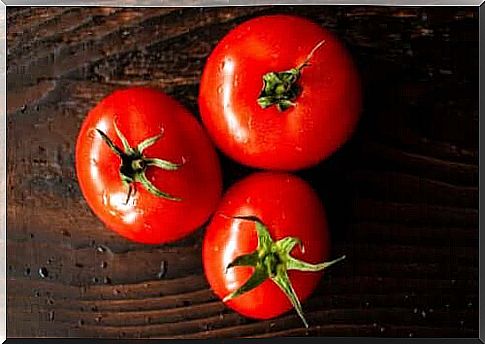
There are differences of opinion whether tomatoes are vegetables or fruits. The fact is that they come from South America. You can now find them all over the world in a wide variety of sizes and shapes.
Their taste is quite unique and not only pairs well with other foods, but tomatoes also provide remarkable amounts of vitamin C, potassium and lycopene. Note that tomato paste and ketchup have higher concentrations of the latter.
2. Red bell pepper
This is another product coming from the Americas which is now spread all over the world. It is a vegetable with a hollow inside and the edible varieties are grown on it to be even more fleshy and softer. Green and yellow peppers are also available, but the red varieties contain higher amounts of nutrients such as:
- beta carotene
- vitamin C
- B6
- folates
- antioxidants
3. Beetroot
The taproot of the Beta vulgaris plant has been consumed since prehistoric times. Betaine is the most prominent component and people have used it as a coloring agent for generations. It also has a high natural sugar content, so people often use it to make sweet products such as cakes, candy and syrup.
However, you should keep in mind that the excessive consumption of beet juice can lead to negative side effects. This is because it is said to increase the concentration of nitrates that stimulate abnormal cell growth.
4. Chili pepper or chili
The chili pepper belongs to the same family as red peppers, only it is smaller and spicier. Don’t let the size fool you though – it has great nutritional value!
Chili peppers contain a large amount of vitamin C. Chili peppers also contain capsaicin, one of the characteristic components, which has a clear analgesic effect.
5. Red onions
There are hundreds of different varieties of this vegetable. The outer layers of a particular species are red because of the anthocyanins it contains. The color of red onions fades when you cook them, but this is not a problem as you can eat them raw. These onions are great for caramelizing and making jams and chutneys.
6. Red chicory
Just like endive and chicory, this plant belongs to the genus Cichorium. Red chicory has a slightly bitter taste and is widely used in pasta and risotto recipes. They are also a fantastic source of vitamins and minerals such as copper and manganese.
7. Red Chard
This edible plant stands out for its leaves and fleshy stems. The green variety is better known and used more often, but some varieties contain betaine, so they are red. This plant has been cultivated more and more in recent years.
8. Watermelon

This is the quintessential summer fruit, as the flesh is quite light and juicy. You may not know it, but it is also a source of minerals such as manganese and potassium.
Watermelon is a great treat any way you eat it, but what you may not know is that it pairs particularly well with savory dishes like a goat cheese salad.
9. Red Grapes
The edible berries of the Vitis vinifera plant mainly come from Europe. Unlike the grapes used in winemaking, these grapes come in bunches of large berries and are sweeter.
Research on the red pigments, along with resveratrol and other phytonutrients, suggests that they may help maintain optimal heart health and prevent and delay age-related diseases.
10. Strawberries
Strawberries come from a plant that is very easy to grow. Unfortunately, we can only enjoy that in the summer. People harvest them when they are ripe and one has to consume them within a few days as they are quite fragile.
Strawberries are also grown and imported in greenhouses, so we can enjoy these fruits all year round. They have a high fiber content and are rich in potassium and magnesium.
11. Cherries
This is one of the most prized fruits for its natural sweetness, although there is also a sour variety. They all contain various antioxidants and polyphenols (beta-carotene, anthocyanins and flavonols) that may have anti-inflammatory properties.
12. Pomegranate
The Punica granatum shrub produces a red fruit with a high nutritional value called the pomegranate. The skin is not edible but hides the small, intensely colored seeds. You can juice them or add them to a variety of fresh dishes.
Tips for using red fruits and vegetables in the kitchen
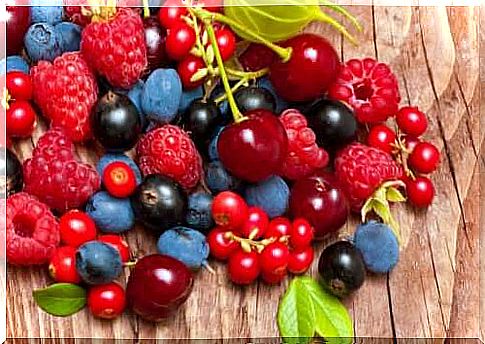
One of the easiest ways to reap the benefits of red pigments is to eat more red fruits and vegetables. There are many, so you can find them all year round! Eat them fresh as a dessert or snack or add them to all kinds of recipes such as:
- a fruit shake
- frozen in fruit and vegetable smoothies
- salads with a sweet and crunchy touch
- jam and chutneys
The easiest way to eat red fruits and vegetables is to add them to salads. This way you can take advantage of their nutrients: the water-soluble vitamins and minerals.
You don’t have to eat them all every day and the variation is such that you can make a different combination every day for a long time. For example, you can combine tomatoes, roasted peppers, red onions or beets with green, yellow, orange and white vegetables.
You don’t always have to eat them raw either. In fact, it seems to increase the effectiveness of their pigments when you heat them. Also, adding olive oil or another fatty product such as avocados or nuts increases the absorption of the nutrients.
As you can see, tomato stews, homemade tomato sauces, roasted peppers, ratatouille, beetroot cream, red chard omelette are all good for your health. Not to mention how delicious watermelon can be when you grill it with a little oil and a piece of hard cheese!
The importance of eating red fruits and vegetables
Red fruits and vegetables such as beets, peppers, tomatoes, watermelon and cherries have many health benefits and can help prevent certain diseases.
Keep in mind that there is no single food that can provide all the nutrients we need. That is why we also need to include green, yellow, orange and blue pigments in our diet.
There is a huge variety of fruits and vegetables and we are aware of their positive effects. That’s why we recommend a combination of five servings per day.
Be sure to include the other food groups, such as protein, whole grains, olive oil, and nuts. Remember that variety is one of the keys to a healthy, balanced diet!




